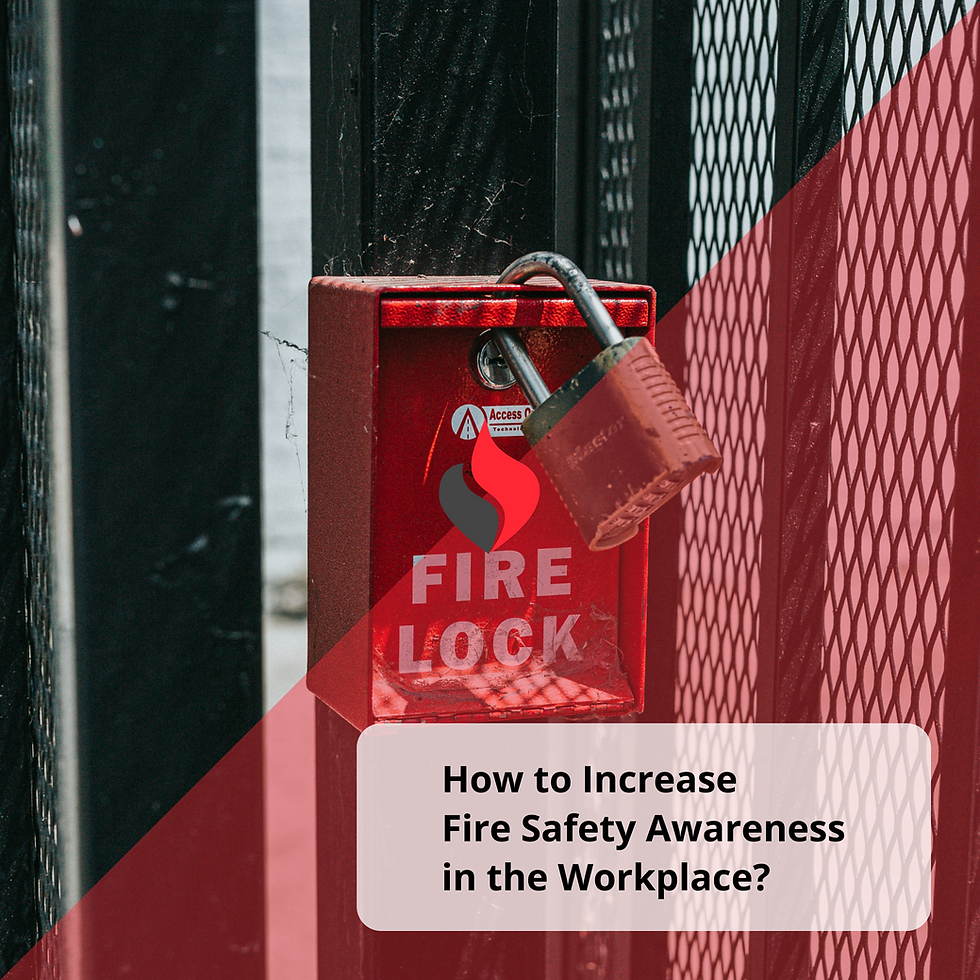How to Increase Fire Safety Awareness in the Workplace
- Pavlo Lapikov

- Jul 29
- 4 min read
Updated: Dec 2

Article Overview
Fire safety awareness fails when messaging does not feel relevant, timely, or connected to the realities of daily work. Many organizations distribute posters, hold annual drills, or send reminders, but employees quickly tune out information that feels repetitive, disconnected from their role, or unsupported by leadership. Effective fire safety awareness requires context, active engagement, and consistent leadership involvement. This article explains why employees disengage, how leaders influence awareness, which training approaches create relevance, and what communication methods and timing strategies help organizations build lasting fire safety habits.
Table of Contents:
Why Do Employees Tune Out Fire Safety Messages?
How Does Leadership Shape Fire Safety Awareness?
How Can Training Make Fire Safety More Relevant?
What Methods Increase Engagement With Fire Safety Content?
Why Is Timing Critical in Fire Safety Awareness?
FAQs
Most people ignore fire safety until it becomes real. Posters fade into the background, drills turn into social breaks, and safety plans collect dust. When emergencies strike, confusion replaces preparedness.
Why Do Employees Tune Out Fire Safety Messages?
Fire safety awareness fails when it feels irrelevant or repetitive. When messages don’t connect to a person’s actual work environment or responsibilities, they lose meaning. Overexposure also leads to fatigue. After months of seeing the same sign in the hallway, people stop noticing it.
According to the National Fire Code of Canada, all employees must be trained in procedures relevant to their workplace. Yet this requirement often becomes a checkbox exercise rather than a chance to reinforce real understanding. Experts recommend reviewing and updating materials every six to twelve months, changing delivery formats, and tailoring content to different roles.
How Does Leadership Shape Fire Safety Awareness?
When leadership is silent on fire safety, employees follow that silence. Managers who skip drills or delegate safety talks signal that the topic isn’t important. Visible participation, on the other hand, creates credibility and shared responsibility.
Organizations that involve supervisors directly in campaign delivery see stronger engagement and retention. Leadership’s influence on culture is measurable: workplaces with active managerial involvement report higher compliance rates and fewer procedural errors during drills.
How Can Training Make Fire Safety More Relevant?
Generic fire safety training rarely works. Each role faces different challenges and requires specific, context-based instruction. A maintenance technician, for example, faces different risks than a receptionist or teacher. Fire marshals frequently cite mismatched training as a cause of failed inspections and poor emergency response.
In British Columbia, one retail business was fined for neglecting extinguisher refresher training, despite having materials on file. Meanwhile, an Ontario workplace in 2022 controlled a fire quickly because staff practiced realistic evacuation scenarios.
Relevance, frequency, and hands-on engagement made the difference.
What Methods Increase Engagement With Fire Safety Content?
Fire safety awareness should feel active, not passive. Campaigns that rely solely on posters and memos rarely stick. Instead, use mixed formats, interactive sessions, and short reminders that keep safety visible and fresh.
Checklist for Building Fire Safety Awareness:
Tailor all training to your specific industry and facility
Vary the format of safety messaging (e.g., video, in-person, or signage)
Involve managers in communication and drills
Use real scenarios during drills to simulate realistic pressure
Offer short refreshers monthly instead of one annual session
Keep exits clearly marked and compliant
According to industry data, regular fire drills can cut evacuation times by up to 50 percent. When people know their role and have rehearsed under mild stress, instinct replaces panic.
Why Is Timing Critical in Fire Safety Awareness?
Raising awareness after an incident is too late. At that stage, the focus shifts from prevention to recovery. Building habits before an emergency gives people the clarity and confidence to act.
More than 40 percent of small businesses never reopen after a major fire. Awareness should begin during calm periods, orientation, staff meetings, or annual planning cycles: when the message can be absorbed without panic. Fire safety awareness is not about fear; it is about preparation, empowerment, and responsibility. When employees understand the “why,” they participate with purpose.
You can hear real-world discussions about timing, behavior, and prevention on the Fire Safety Philosophy Podcast, and explore implementation tools through Fire Heart FSMA Services.
FAQs
1. How often should fire safety awareness messaging be updated?
Awareness materials should be refreshed every 6 to 12 months to address turnover, evolving risks, and message fatigue. Changing formats, visuals, and delivery methods keeps information noticeable and relevant.
2. What role does leadership play in improving employee attention to fire safety?
Employees take their cues from managers. When leadership participates in drills, reinforces messages, and speaks about fire safety regularly, engagement increases. When leaders stay silent, employees assume the topic is low priority.
3. How can organizations make fire safety training feel more relevant to different roles?
Use role-specific scenarios, industry-specific hazards, and realistic examples. Tailoring training to the actual tasks of maintenance staff, office workers, childcare educators, or healthcare teams increases retention and confidence.
4. Which delivery methods improve engagement with fire safety content?
Short videos, micro-lessons, hands-on drills, scenario walk-throughs, and mixed-format communication outperform static posters. Variety helps keep employees alert to messages that can otherwise blend into the background.
5. Why is timing important in fire safety awareness campaigns?
Awareness must be built during calm periods, not after an incident. Introducing safety concepts during onboarding, quarterly meetings, or routine operations allows employees to absorb information without stress, creating stronger habits for real emergencies.



Comments